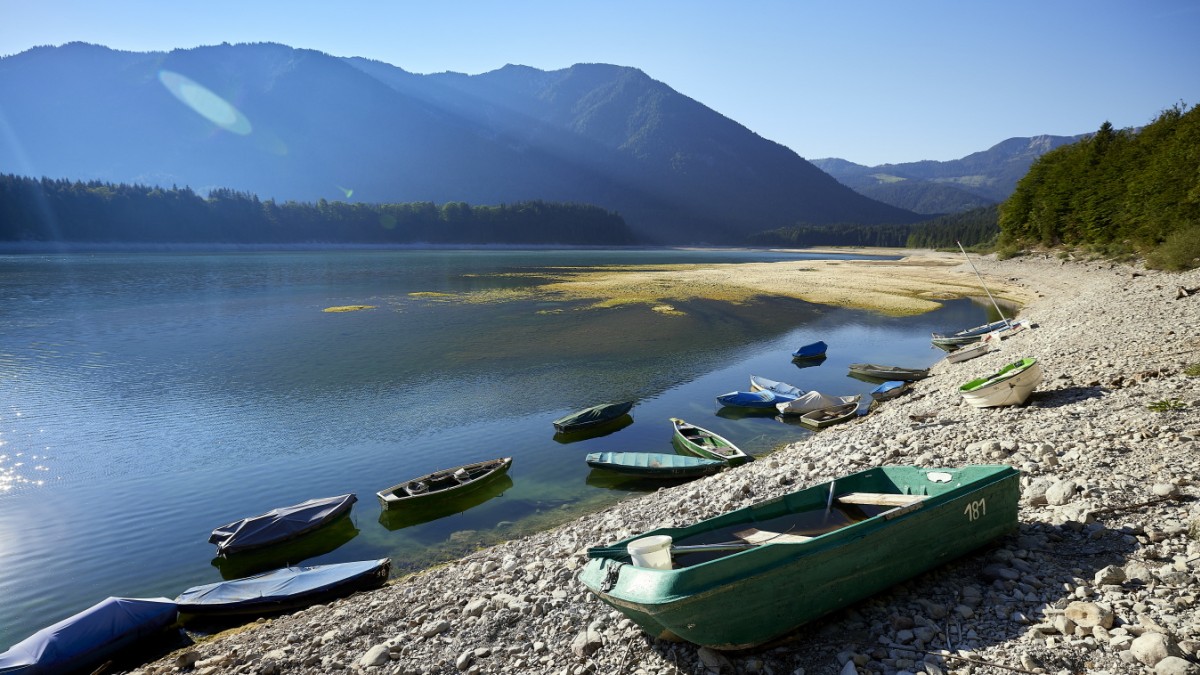Now it’s official: last winter was “very dry and very warm with very little snow” in Bavaria, too. You can read about it in the current state of low water status report from the State Environment Office from the beginning of March. And so the Free State is heading into another dry year. This is evidenced by looking at the groundwater levels in Bavaria. At the beginning of March, 61 percent of measurement points near the surface showed low or very low groundwater levels. In low groundwater levels it was as high as 71 per cent. Since then, the situation has only improved marginally. Groundwater tanks should be filled well in early spring.
Frequent droughts in this country are usually associated with climate change. Because with the general increase in temperature, the usual precipitation is missing more and more. In Lower Franconia, for example, where precipitation fell much less than in Upper Bavaria and the Allgau for living memory, there are now “areas of rain as little as in the mountains of Jordan and Israel”. Environment Minister Thorsten Feither (FW) has repeatedly sworn that this is the case. “If we don’t do anything about climate change, our average temperature will rise by as much as 4.8 degrees by the end of the century.”
However, global warming and lack of precipitation are only one reason for the increasing drought in Bavaria. The other is homemade. It is a far-reaching transformation of former landscapes into modern cultural landscapes – through modern agriculture as well as through the construction of more and more settlements, commercial and industrial parks and toll roads, but also through the straightening and channeling of most rivers and streams.
Professor Karl Auerswald, who is Head of the Department of Grassland Theory at the Faculty of Life Sciences at the Technical University of Munich, and other experts made this very clear in the hearing “The Future of Water Management in Times of Global Warming” before the Environmental Committee. from the state parliament. Orswald’s central sentence: “A large proportion of droughts are regional and local and not due to global climate change caused by carbon dioxide.”
Auerswald named the drainage channels along the roads in Bavaria as a vivid example. Taken together, they are six times the length of all the rivers and streams here in Bavaria, said Auerswald. “It’s one of the reasons why rain can flow so quickly and not have time to seep in.” However, this means that they are not used to form new groundwater. Another example is the heavy machinery and tractors that farmers use to cultivate their fields today. They compact the soil greatly. The result: They can’t absorb enough water, store it and release it into the groundwater. Larger fields and cleared fairways ensure that precipitation, if it does fall, drains quickly. These effects are no small thing. After all, 46 percent of Bavaria’s land area is farmland.
New hedges would make sense
Conservationists like biologist Christine Margraff of Bond Natureschutz (BN) have been fighting against landscape drainage for many years. From their point of view – they agree with experts like Auerswald – it’s not just about the growing aridity and drought in this country. But also to protect against floods and local flash floods when it rains hard. For the precipitation that accumulates, for example, in meadows, in hollows, or along streams and rivers, and seeps at least partially into the ground, cannot flood a neighboring village or street. “That’s why we now have to take every opportunity to conserve water in landscapes,” says Margrave, who also appeared as an expert in the session. “Our floors play a major role in this.”
The actions to be taken are known. Farmers should pay more attention to the fact that their fields can store a lot of water and, for example, refrain from using ever heavier machines. But hedges, edges and new field borders in fields would also make a lot of sense, as they reduce the rate of rainfall. In addition, rivers and streams should be given more space by moving dams and dams. Rehabilitation of swamps, alluvial landscapes and other wet areas also contributes significantly to securing groundwater reserves and protection from floods. And, of course, the massive use of land for the construction of new roads, settlements, commercial and industrial complexes, as well as traffic routes must be curtailed.

“Total coffee aficionado. Travel buff. Music ninja. Bacon nerd. Beeraholic.”







More Stories
Researchers detect extremely high-energy gamma rays
Anxiety disorders in old age increase the risk of dementia
Researchers are particularly fascinated by these exoplanets.